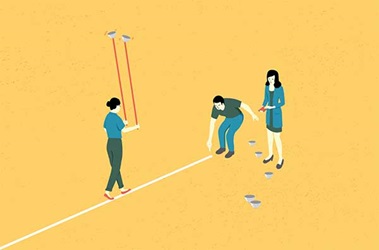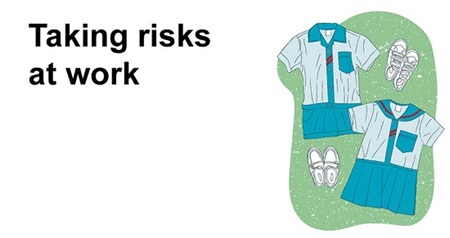Dare to Dream, Dare to Fail

IN Apollo 13, a Hollywood film about a moon mission that turned into a mission to save three astronauts trapped in a crippled space vessel, one famous line stands out: “Failure is not an option.”
The line from the acclaimed 1995 movie may be artistic licence, but the spirit of the message from mission control is relevant to any discourse on risk-taking and innovation.
Is failure an option – or acceptable outcome – in pursuit of innovation in the Public Service, where responsibility comes with the added weight of public funds?
The famous inventor Thomas Edison, who perfected the electric light bulb, said:

This is a variation on the axiom that one must always learn from one’s mistakes. But would Edison’s success rate (or wastefulness, depending on your perspective) fly with the Public Service? Would his level of risk-taking be accepted or encouraged?
If perception is reality, then perhaps not. The pervasive ingrained public service culture seems to suggest that “failure” is a dirty word.
To tolerate, or seem to be soft on, failure would suggest a blasé attitude in an achievement-centred economy. Better, then, to be safe, than sorry?
Are the preceding two paragraphs a fair assessment or a persistent stereotype? How do public officers today approach innovation; where do they draw the line between daring and foolhardiness, responsible and irresponsible?
Mr Lim Siong Guan, Head of Civil Service from 1999 to 2005, wrote in a 2002 commentary: “The fear of failure is the single most important reason people hold themselves back from thinking and trying. But we cannot expect to be an innovative, forward-looking, enterprising, energetic Public Service full of people who are alive, brains ticking, hearts beating, if we cannot forgive mistakes.”
Forgiving (Good) Failure
Mr Chan Yeng Kit, Permanent Secretary of Ministry of Information, Communications and the Arts, and chairman of the PS21 ExCEL Committee, thinks that risk-taking, and inherent risk of failure, are more encouraged today.
“I believe the message is getting through that... senior management accepts the risk of failure as long as due diligence has been done and we have done whatever is reasonable to mitigate the risks. Indeed, the greater failing would be not to try at all.”
To stand pat and do nothing, for fear of failing, is to ensure “zero chance of success”, he pointed out. This tack also invariably leads to negative consequences such as failing to keep up with the times and society’s needs.
At the passing of former Deputy Prime Minister Dr Goh Keng Swee in May 2010, Mr Lim Siong Guan recalled Dr Goh’s inspiring pronouncement on failure, that

Former Head of Civil Service Mr Peter Ho, who stepped down this September, has also talked about the need to “act boldly” in the face of opportunities.
“We must be prepared to experiment, even if we cannot be entirely certain of the outcome. In the complex, even chaotic, space that I believe we are operating in now, the approach is to probe, sense patterns, and to act, even in the absence of complete information.
“The biggest failure will be the failure to act, because we fear to fail. We must learn not to operate in a “fail-safe” mode, but instead to operate in a “safe-fail” mode.”
The senior management in the public sector know that “no one plans to fail deliberately” and that any new initiative must have a worthwhile payoff and reasonable chance of success, said Mr Chan.
In other words, there may be the “good failures” that result from good intentions, sound strategies, appreciation for resources and opportunity cost, as well as the application of experience and knowledge.
He cited the e-government projects a few years ago on the then-popular virtual-world platform, Second Life. Later, as the Second Life fad waned, so did these projects.
“We just have to learn from these efforts and move on,” he said, pointing out that there are currently e-government projects on popular social networking platforms. “No one will know (if cutting-edge projects can work) until we have tried it.”
So long as risks are understood, and due diligence exercised, “officers will not be blamed if things don’t work out as anticipated due to extraneous reasons,” he added.
A Brush with Success


The affordable and effective Happy Brush, launched in 2008 at $2.50 each, was the result of a Work Improvement Team (WITS) project for the eight-strong team of dentists and dental therapists, led by Dr Eu Oy Chu, Senior Deputy Director, School Dental Service.
WITS, a public service innovation platform since the early 1980s, brings public sector officers together in groups to identify work areas that need improvement, before brainstorming to come up with relevant solutions.
The Happy Brush team stated that “failure is no longer a dirty word” but is considered “a stepping stone to new discoveries and greater achievements.”
Team members noted the poor oral hygiene of school-age patients; they also wanted a solution accessible to less-privileged children. They struggled at times with the project, yet persisted, receiving timely aid at several key turns. The Innovation Activist Group within HPB, tasked with promoting innovation, earmarked the project for additional funding supported by the Ministry of Health.
The team also sought expert help from a computer-aided design firm GIM Solutions and another designer to verify and illustrate the toothbrush’s viability.
Then, one of the team members had a chance meeting with a friend from A*STAR that led the team to approach the research development agency for assistance. This ultimately led to the product going to market.
For the Happy Brush project, the intricate system that nurtures innovation within the Public Service worked well, even involving inter-agency co-operation in an organic manner, with quality contributions from external parties.
Dr Eu believes that the current public service culture also helped. “There may have been some red tape in the past, and a common perception was that getting things done differently was difficult and tedious... it is more conducive now to embark on such initiatives.”


Mitigate, Not Eliminate
The “no risk, no gain” philosophy has long resonated with Mr Yap Chin Beng, Deputy CEO (Estates & Corporate) and Chief Innovation Officer at the Housing Development Board (HDB).
“Between acceptable risk-taking versus chasing a lost cause, my advice to staff is to take ‘calculated risks’ which require the guts to try, as well as knowledge and experience.”
Mr Yap acknowledged that stigma used to come with failure, but this was no longer so. “I would say people are currently more willing to accept failure as a part of the learning process.”
Asked about the apparent conundrum of encouraging risk-taking without appearing to encourage failure, he reiterated the need to do the necessary research and analysis to better understand the risks involved and how to mitigate those risks, as part of the due diligence expected at all levels.

Mr Yap cited two pilot projects that HDB had carried out to meet the needs of extended family living: the multi-generation flats introduced in 1987 and the two-room “granny” flats in Pasir Ris in 1991.
Both projects did not achieve the intended results. Despite this setback, HDB enhanced the scheme and introduced the Multi-Generation Living Scheme in Dawson in Dec 2009. Under this scheme, HDB paired studio apartments with four- and five-room flats so that extended families can live together in separate but adjacent units. The scheme was very well-received with almost all the flats sold at the end of the selection exercise.
The Seed of Inspiration
If there is anyone familiar with failure, it has got to be a scientist who often conducts a large number of experiments while seeking breakthrough discoveries. Dr Lee Mun Wai from A*STAR’s Singapore Institute of Manufacturing Technology is no exception.
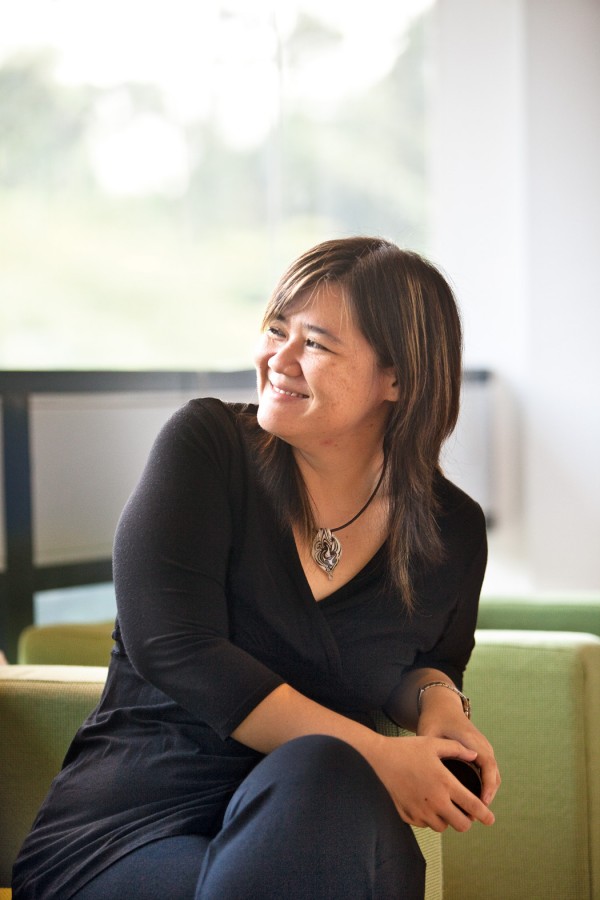

The associate research scientist has always wanted to help save the Earth. Trained in polymer science and technology, she has recently succeeded in creating eco-friendly biocomposites to replace the use of conventional plastics. The biocomposites are made by compounding wheat bran (by-products of a flour milling process) with recycled plastics, and made into biodegradable cutlery and packaging.
In the research sector, she has found, failure is not taboo, as only through failures can researchers understand their subject better.
“Failed experiments are informative as well, and serve to direct us to look at issues from other perspectives. They can give a lead to solving some other related issues.”

Indeed, her career crowning achievement thus far, winning the Outstanding Paper Award for Young Engineers / Researchers (International Category), was based on a painstaking scientific process and several stinging setbacks.
Once, she spent 28 hours in a lab on an experiment that yielded no reliable results, because it had fallen victim to contamination. “At that moment, I was really in great despair. Looking back now, despite the painful process, I am happy that this piece of research was recognised by international judges.”
Dr Jason Liow, a senior research engineer at A*STAR’s Institute of Microelectronics who works in the area of silicon photonics – using silicon as an optical medium in various systems, including microchips – thinks that failure is unavoidable in research.
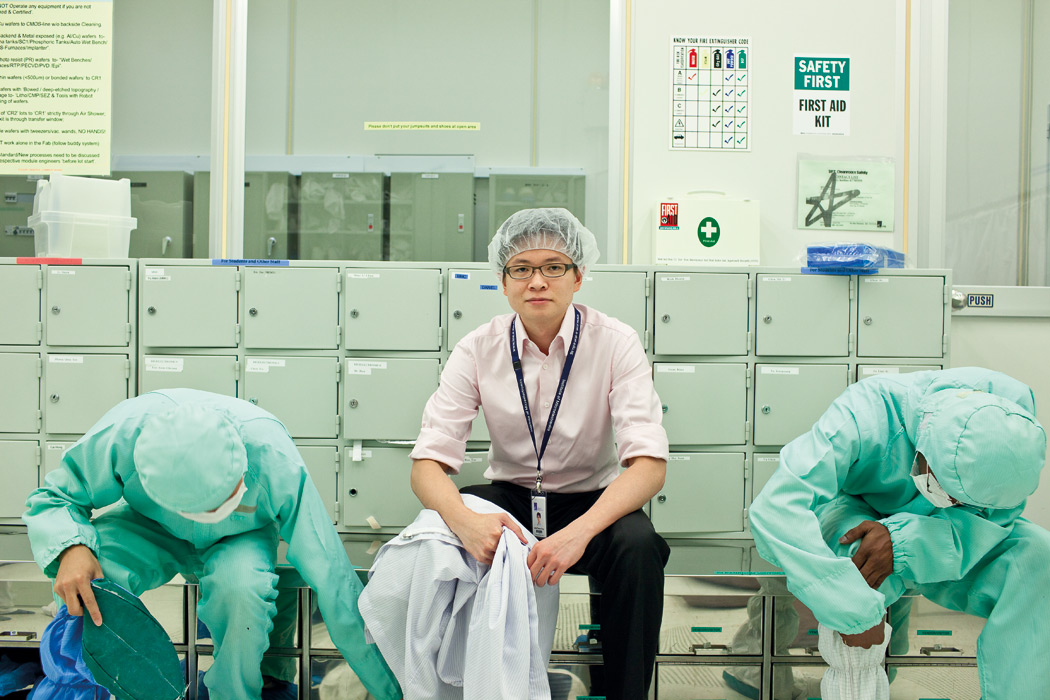
When he first started working on a silicon optical modulator, he and his team were stumped as to why it did not work. After many tries, they eventually conquered what initially seemed an insurmountable task.
Dr Liow made a distinction between intrinsic and extrinsic factors for failure. Unexpected, perhaps unpredictable, outcomes intrinsic to the research materials or conditions are acceptable. But extrinsic factors outside of the experiments, such as poor planning of research methods and other human errors, should be avoided.
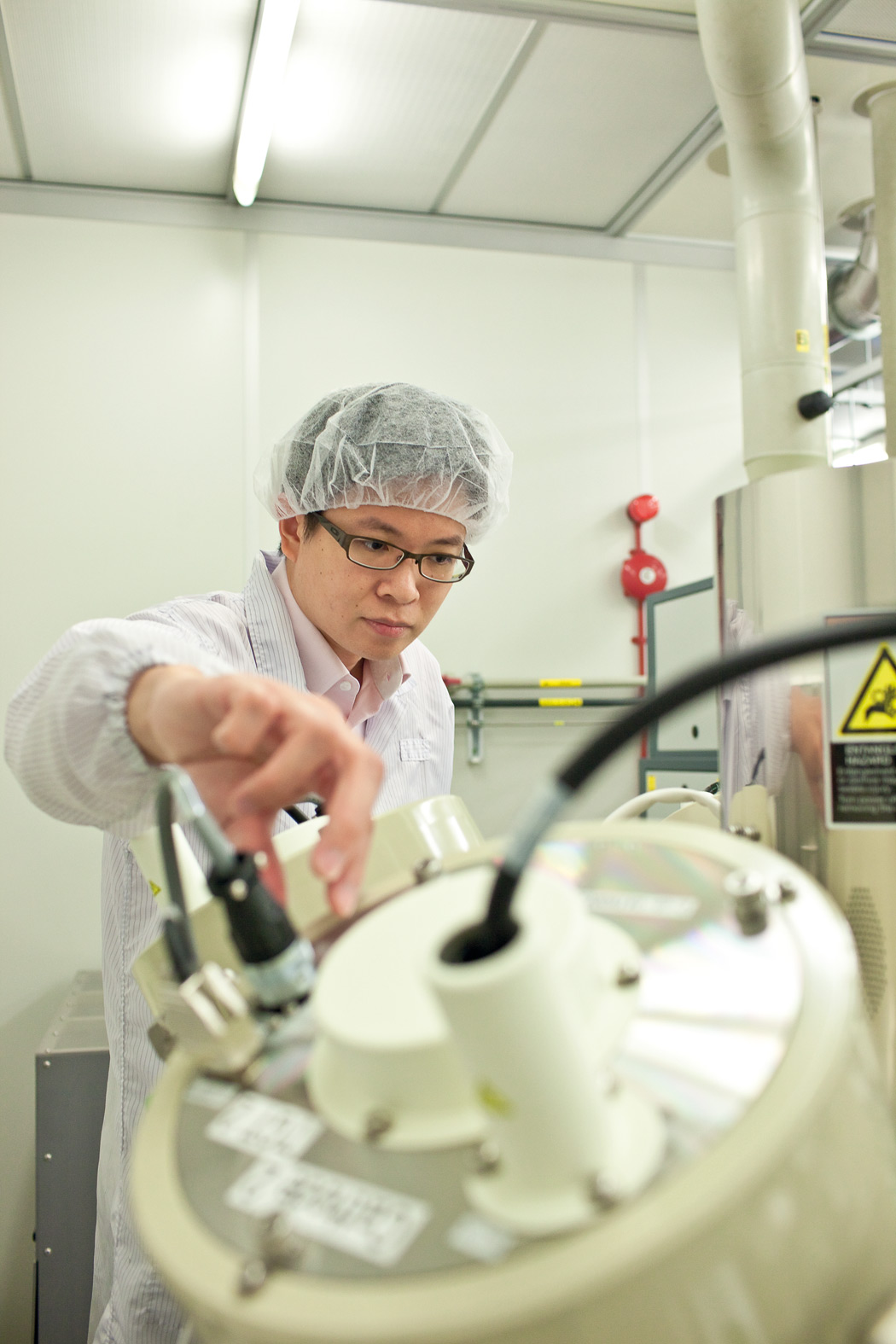
Without risk-taking, research results would be ‘incremental’ and not ‘breakthrough’ in nature, he reckoned, and finding the balance between risk-taking and efficiency comes with experience. “Personally, I prefer to execute experiments with two or more parallel paths with different amounts of associated risks. If the higher-risk path leads to failure, the lower-risk path can still yield good results.”
No Bystander Effect
Organisational culture and leadership, according to experts, have a big part to play in embracing innovative strategies and encouraging calculated risk-taking.
“I would say the biggest stumbling block is the nature of the senior leadership in a company, and where and how they view the relative roles – theirs and their employees – in creating change and innovation,” said American innovation guru Dr Alan Robinson.
He advocates ‘ideas systems’ where management sets the direction for a company and frontline employees contribute the bulk of innovative ideas, as much as 80%, and help move the company forward, as opposed to traditional ‘command and control’ top-down hierarchies, where management does all the thinking and issues orders.
Having worked with organisations in Singapore’s public and private sectors, Dr Robinson noted the strong topdown culture here and the ‘loss of face’ issue when problems are raised.

“For me, a problem is the first step towards an idea; they’re opportunities. But if people bury problems and don’t want to talk about them, they can’t come up with ideas.”
He noted that Brazil’s most innovative company last year, a steel-can manufacturer called Brasilata, received an average of 185 ideas each year from frontline employees, of which 92% were implemented. One employee submitted an astonishing 16,000 ideas – and he was a forklift driver!
Any company in the world could encourage ideas like this, he believes. But tolerating a degree of failure is required. “When you create a culture of wanting ideas, you create a culture of tolerating small failures because the only way you can test an idea is to try it. You have to simply do it to find out what unintended consequences are.
“(Famed management consultant) Peter Drucker said that you should never design an experiment so that if it fails it will ‘kill’ you. Always design a lot of small experiments, so that you can get the learning without the failures ‘killing’ you.”
Mr Christian Chao, deputy director of the Centre for Organisation Development at the Civil Service College, noted the inherent difficulties in communicating to a large group of people; for instance, an organisation’s leaders to the rank-and-file.
Hence, to create a culture that embraces experimentation, it is important to be explicitly clear about what behaviours organisations wish to promote, and expect from employees. “Once we are clear what desired behaviour(s) we want to establish as a behavioural norm, it makes it easier to establish what might be hindering or helping people exhibit this behaviour, say being experimental or risk-taking,” he said.
If it were made known that experimental mindsets and actions were desired, and these were then found lacking due to a dearth of skill and knowledge, training could be introduced; if, say, the existing behavioural norms within an organisation inadvertently penalised even measured risk-taking, then something has to be done about those norms.
Then there is the ‘bystander effect’, a social phenomenon in groups of a certain size where responsibility is not explicitly assigned and gets ‘diffused’. The larger the group, the greater a shared presumption that someone else is going to respond to a situation requiring intervention.
In an organisational setting, the less responsibility is communicated and assigned in an individualised way, the greater likelihood of inaction, Mr Chao said.
“Instead of adopting generic or blanket-approach communications, it is better to ‘individuate’ communication. That is to communicate on an individual basis with direct instructions as to what you want him or her to do.”
So if we want a culture of experimentation and risk-taking (one that supports innovation), employees had better know, without any doubt, what their individual roles are, and what actions they will be held accountable for.
The Fear Factor
A key message public officers need to keep in mind is that while failure is less desired than success, fear of failure and inaction is worse.
“The world around us keeps changing. If we refuse to learn anything new, we will be left behind. The smart way is to be open to new ideas,” Mr Lim Siong Guan wrote eight years ago.
“Even better, each of us should feel free to come up with new ideas and try them out. If we do this, there is a fair chance we will make mistakes. But this is the smartest approach to take, provided we (and our bosses and colleagues) are prepared to always treat mistakes as learning opportunities.”
American filmmaker James Cameron has twice made the most expensive film, first with Titanic (1997) and then Avatar (2009). Both featured ground-breaking visual effects – hence the enormous budgets – and were extraordinary spectacles.
Despite naysayers and their ominous predictions ahead of release, both Cameron’s works trumped expectations, 12 years apart, to become the most successful box-office hits of all time. (Avatar still holds the honour.)
Perhaps he put it best during his speech at a TED conference this February: “Failure is an option, but fear is not.”
Words worth remembering, as the Public Service continues to embrace potentially great ideas, and the calculated failures that are their foundation.

- POSTED ON
Nov 2, 2010
- TEXT BY
Yong Shu Chiang
-
Deep Dive
Strengthening Singapore’s Food Security
-
Deep Dive
Seeing Risk Differently
-
Your Say
Taking Risks At Work








